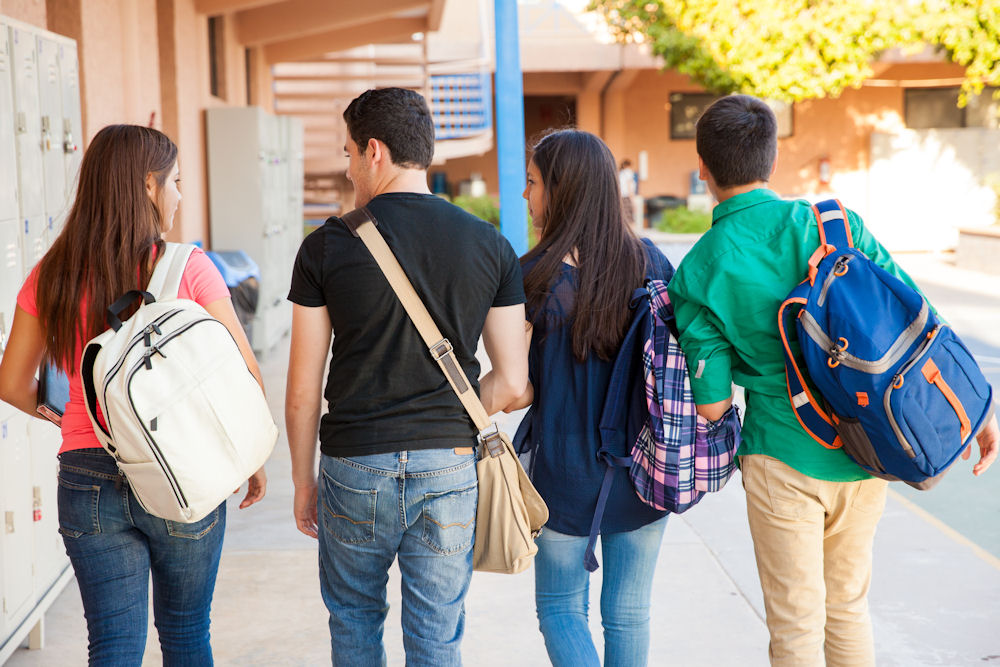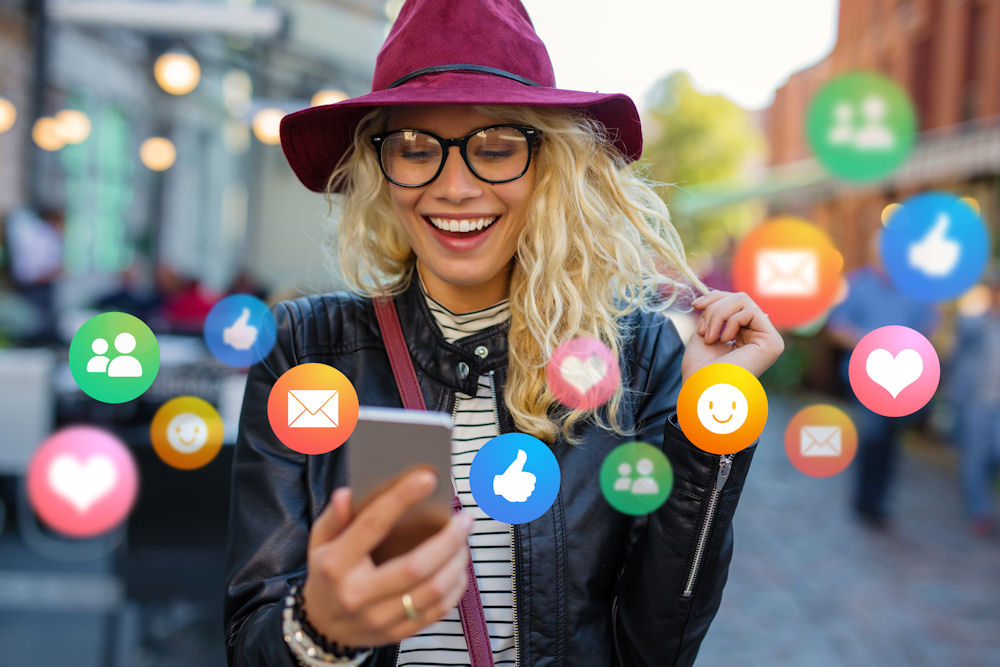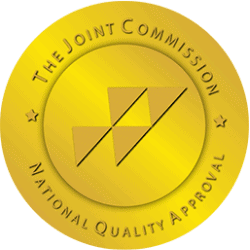Risk-taking and experimental behaviors are an inherent part of adolescence. Social media provides increased opportunities for the marketing and communication of risky behaviors and products.
We know that social media exposes individuals (particularly adolescents) to favorable presentations of using addictive substances like tobacco, alcohol, and cannabis (also known as marijuana), along with other risky behaviors.
Young adults and adolescents are especially vulnerable to the effects of digital communications and social media in particular. They tend to be:
- Early adopters of social media
- Extensive users
- Highly susceptible to the influence of peers
The use of alcohol among adolescents and young adults is of particular concern because it involves different types of injury:
- Unintentional, such as vehicle accidents and violence victimization
- Intentional, such as self-inflicted injuries.
Even though the rates of alcohol use have dropped over the last 20 years, early adolescent increase in the use of alcohol and other drugs is linked with the later incidence of substance use disorder (SUD).
Addiction: What it is And Isn’t
As defined by the National Institute on Drug Abuse, addiction is a chronic, relapsing disorder. It is characterized by compulsive drug seeking and use, even though there are adverse consequences.
Addiction or substance abuse is considered a brain disorder or disease because it involves changes to the brain’s functions involved with reward, stress, and self-control. The physical changes to the brain may be the reason for the uncontrollable compulsion to continue the drug use.
There are many signs that someone may be struggling with addiction, but it depends on various factors including the substance being abused, and for how long. However, some universal signs of a substance use disorder may include:
- Bloodshot eyes, with pupils smaller or larger than normal
- Changes in appetite or sleep patterns
- Deterioration of hygiene habits and physical appearance
- Runny nose or sniffling
- Sudden weight loss or gain
- Slurred speech
- Impaired coordination
Some people believe that the use of substances is a choice and if they become addicted, it’s their fault. By sheer willpower, they should be able to stop. However, research has proved that addiction is not a sign of weakness or lack of self-control. It doesn’t define the person’s character.
The reality is, that no one would choose to become or stay addicted any more than they would choose to get cancer. Because of the changes to the brain, the person’s self-control and ability to make good decisions are eroded. This explains the compulsive and irrational behavior associated with addiction.
If your teenager is experiencing addiction, their illness is not a sign that you’ve failed as a parent. They’re going through a hard time and need your support more than ever. It is an opportunity for you to show how much you care and are willing to support them in a time of need.
Impact of Social Media On Adolescents

The top platforms for teenagers in 2024 are considered to be:
- YouTube
- TikTok
- Snapchat
Mental Health Effects
Of course, social media doesn’t affect all adolescents in the same way. The use of social media is connected to healthy and unhealthy effects on mental health which vary from one person to another. The effects of social media on mental health depend on:
- What the teen sees and does online
- The amount of time they spend online
- Individual psychological factors, such as level of maturity and preexisting mental health conditions
- Personal life circumstances, including social, cultural, and economic factors
Since safeguards for a digital world are still evolving, preventative measures across health, educational, academic, and governmental areas may be deemed necessary before the risks of young adults’ use of social media are fully understood. The researchers also reported that other factors, such as the behavior of parents, can also influence an adolescent’s risk-taking behaviors.
Negative Effects of Social Media
The use of social media may have some negative effects, including:
- Distraction from homework, exercise, and activities with the family
- Sleep disturbance
- Believing information that’s incorrect or biased
- Spreading rumors or sharing too much personal detail
- Forming opinions about other people’s lives or bodies that are unrealistic
- Exposure to online predators
- Exposure to cyberbullying, which can increase depression and anxiety
According to a 2023 report in the British Medical Journal, teens preoccupied with social media are more likely to smoke, take drugs, and engage in risky sexual activities. Spending at least two hours a day on social media doubled the odds of consuming alcohol, compared to less than two hours per day.
Displays of alcohol use on social media are an indication of personal use among young people and are likely to increase normalizing use among followers of those posts. Marketing of alcohol products is also common on social media. Many brands of alcohol have a presence on social media, which gives them the ability to connect with and develop brand loyalty among young people. Although the marketing programs for the brands may require age verifications before allowing users to gain access to online content, those restrictions can be easily sidestepped and are hard to enforce.
Less is known about social media and other addictive substances, including prescription drugs. Still, there is growing evidence that marijuana use has increased among both adults and young people. The legalization of marijuana use in many states has added to its presence online. Although the advertisement of cannabis products is not permitted on most social media platforms, these businesses can still create business accounts to engage with social media users and promote their content
Positive Effects of Social Media
This isn’t to say that teenagers receive no benefit from social media. Teens can create online identities, chat with others, and form social networks. These networks can offer teens support from other people who have experiences or hobbies in common.
This type of support may help teens who:
- Are lonely or lack social support offline
- Are experiencing a stressful time in their life
- Are part of a low-representation group, such as racial minorities, the LGBTQ+ community, or people with a particular disability
- Have long-term medical issues that may promote isolation
Social media can help teens:
- Become more comfortable with expressing themselves
- Connect with other teens locally or over long-distance
- Learn how other teens deal with challenging life situations and mental health issues
- Participate in moderated chat forums that encourage talking openly about sensitive subjects
- Ask for help or find healthcare for troubling mental health symptoms
Tips to Help Protect Your Teens on Social Media
There are things you can do to help your teen use social media responsibly, without stopping use entirely. Here are some examples:
This will help keep social media from getting in the way of meals, sleep, homework, or activities. You may choose to set a daily time limit or a “time-out” during certain times of day. Follow these rules yourself to set an example of consistency.
If their social media use starts to challenge the rules, talk to your teen. You can also talk to the parents of your teen’s friends or look at their internet history.
This helps keep your teen from sharing too much personal information or data.
The American Psychological Association recommends regularly reviewing your early teen’s social media use. Their maturity level as they get older will guide your decision.
This gives you a chance to ask how social media has been making you feel.
Tell your child about your own social media use. Set a good example and don’t let the talks become one-sided.
Remind them that it’s not good to gossip, spread rumors, or bully others.
This is more important for teens more likely to develop social anxiety.
When to Contact a Medical Professional
Talk to a healthcare professional if you think your teen has symptoms of SUD, major depressive disorder, anxiety, or any other mental health concerns. Talk to the professional if they have any of the following symptoms:
- Using social media even when trying to stop
- Using it so much that sleep, activities, relationships, and school are suffering
- Frequently spending more time on social media than you intended
- Lying to you is to use social media
Be aware that these may be signs of an addiction to social media itself, a growing problem among adolescents.
Professionals You Can Trust to Teach Your Teen about Social Media and Drugs

Because a comprehensive treatment plan is so important, we can provide detox, inpatient, and outpatient programs as needed. Since SUD is a family disease, we also provide help to family members whose lives have also been affected. Parents can rest assured that their teen is receiving customized treatment in a caring, safe, and supportive environment.
You don’t have to feel helpless. There is help waiting for your teen at the Academy. Contact us today for more information.





